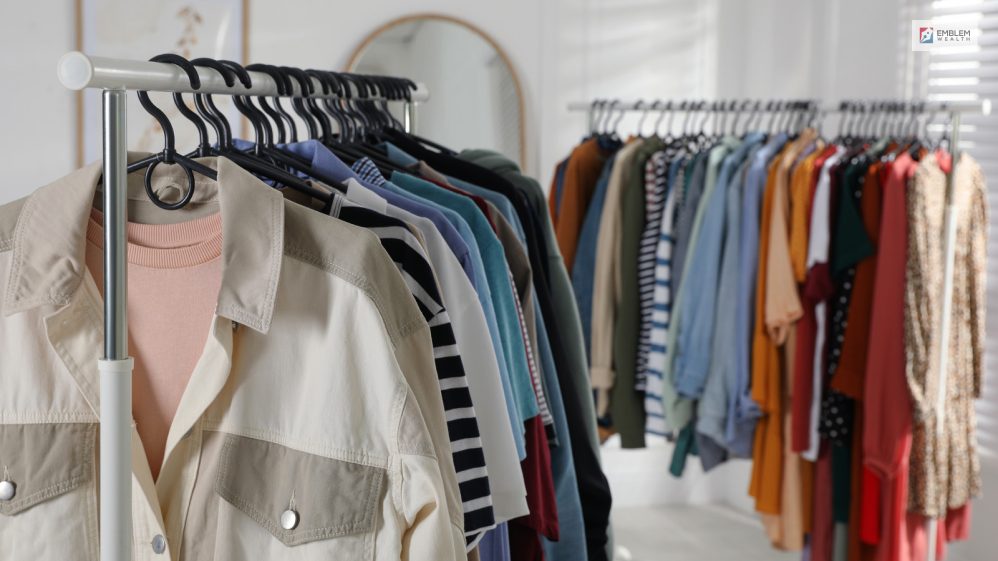How To Build A Successful Fashion Brand: Step-By-Step Guide

Are you ready to turn your fashion dreams into a reality? Starting your own fashion brand is an excellent way to put your creativity and inspirations to good use. It will, however, involve significant work, countless ups and downs, and unexpected challenges.
If you are willing to commit and put in long hours to make your business successful, the entire journey could be extremely rewarding and fulfilling.
In this guide, we take a deep dive into how to start a clothing brand and build a thriving fashion brand with proven and systematic steps. Let’s get started.
Market Research For A New Clothing Brand: The Tips And Tricks
Hey there! My future fashionistas! Before you finally dive into launching your own clothing line, it is necessary to do some detective work. Here are some of the key areas to consider before you start your market research.
- Target audience: Ask yourself- who are your dream customers? What are their style, preferences, and budgets?
- Market competition: Who else is out there doing the job you want to do? What are their strengths and weaknesses?
- Trends: What’s hot right now in the entire fashion world? Is there any emerging trend that you are planning to capitalize on?
- Pricing: How much are people willing to pay for a similar product? What is your own pricing strategy?
- Supply chain: who is going to be the manufacturer of your clothing? Where will you purchase all your raw materials?
- Marketing channels: If you are planning to establish your clothing line, then you will also need a marketing channel to reach your customers. So, how will you target your audience? Are they going to be social media channels? Online stores or the physical ones?
Once you are done with your little investigation, it will be helpful for you to further understand how to start a clothing brand.
Identify Your Strengths And Aspirations
Where do your strengths lie? Are you good at designing, styling, or tailoring? Do you possess any other skills and experience that could add value to your business? For instance, are you good with numbers? Or, have you built a sizeable audience on social media?
Moreover, ask yourself what inspires you. Is there a designer, celebrity, fashion entrepreneur, or even a mentor you look up to? And, more importantly, what do you aspire to achieve?
The answers to these will guide you in your new endeavor and provide direction when you are making key business decisions.
They will also help you determine your personal style, identify strengths to leverage and understand where you would need support from others.
How To Start A Clothing Brand: Prepare A Business Plan
A detailed business plan is crucial for gaining in-depth insights into your fashion brand’s operational feasibility. You will also need it when seeking external funding.
Start by researching the industry and selecting a niche to focus on. If you can address an existing market gap, you can gain a first-mover advantage and quickly build market share.
However, these are hard to come by in the fashion industry. So, depending on your style and design expertise, you might need to enter an already established segment.
If so, select one with less competition and attempt to carve your own niche within it. But ensure it has significant potential for growth and substantial customer demand.
Once you identify a fashion niche, here is what you should focus on as you develop your business plan:
Define Your Target Audience
Identify geographic, demographic, and psychographic factors of your potential customers in detail. Some of the questions to explore include:
- Who are your primary and secondary audiences?
- Which age group do they fall into?
- How do they make fashion purchasing decisions?
- What are their buying habits?
- What is their disposable income?
- Where do they live?
- What other lifestyle choices and practices do they have?
Set Realistic Goals
Articulate your business vision, mission, values, and objectives. Then, set timelines for each goal you identify and ensure it is specific, measurable, realistic, and achievable.
Goals can cover sales targets as well as awareness, market share, and customer footfall metrics. Use historical industry data you may have already uncovered during research as a benchmark to guide your financial and sales forecasts.
Determine The Route-To-Market Strategy
How will you make your clothes available to your customers? Will you set up a traditional brick-and-mortar shop, partner with a high-street retailer, or establish an online store?
Assess the drawbacks and benefits of each option and take note of the resources available when identifying the best route for your business.
Prepare A Budget
This is an essential part of your business plan, which will help you understand the financial resources required and how much is already available so you can identify the extra funding requirements and the budgetary limits you may need to work within.
The budget-preparing process will also give you the opportunity to determine how you could source funds to start your business. You may use your savings, apply for a traditional loan, seek a small business grant, find an investor, borrow from friends and family, or opt for crowdfunding.
Design And Manufacture
After completing the business plan, you can begin designing the clothing lines. This will naturally take some time, so starting as early as possible is important.
When it comes to manufacturing, assess the best option for your business. For instance, you may produce in-house to maintain tighter control over the tailoring process. However, this could be costly and time-consuming.
You can also outsource to local or overseas suppliers. If so, check whether they have the capacity to cater to your needs as your business grows.
They must also be able to prioritize your requirements and respond quickly to changing market conditions. Ensure you visit the factory, discuss your specific business needs, and negotiate prices before signing contracts.
Branding Strategy For A New Fashionable Clothing Brand
This is another step you must work on as soon as you finalize your business plan.
Select a unique brand name that reflects your style. Then, create a logo, finalize brand colors, identify the brand voice, craft key messages, design a brand story, and prepare the critical brand visuals, including clothes tags, packaging, and the like.
All these must align with your fashion brand’s identity and be relatable to your targeted customers. For instance, if your clothing line caters to a teenage audience, the design elements used—from the logo, colors, and language to packaging and communication materials—should appeal to them.
Build An Online Presence
Whether you decide to set up a physical store or an online shop, building a digital presence is necessary for creating awareness and driving sales.
Today, developing a website is effortless and inexpensive. However, if you intend to facilitate purchases through it, getting a professional website designer and developer is important.
You can also create a store in a marketplace such as Amazon or Etsy. It will give you access to a captive audience and a global customer base. However, competing with hundreds of other sellers could be challenging.
Strengthening your social media presence is also essential for both online and physical fashion stores. Create an engagement plan with regular content, interactive competitions, free giveaways, opinion polls, and other activities to build a loyal follower base.
Launch Your Fashion Brand
Finally, it is time to launch your brand and implement your marketing plan. Online advertising, email campaigns, search engine optimization, promotions, and social media influences are all critical elements for creating awareness at the initial stage.
Networking is also vital. So, attend industry events, find useful suppliers and business partners on Leadar, and connect with designers and potential investors on social media.
Sales & Distribution Channels For Fashion Brands
So, you have got a killer fashion brand, and you are ready to take the world by storm. However, do you actually get your clothes into the hands of the customers?
This is exactly where the sales and distribution channels come into play. Here are some of the most popular options:
- You must have your own website. But do not stop there! You can also sell clothes on online platforms like Amazon, etsy, or Spotify.
- The brick-and-mortar system is still on the roll. So, consider opening a physical store that can help you create a great shopping experience.
- You can also partner with department stores where you can expose your brand to a wider audience.
Case Studies: Fashion Brand And Marketing
Here are some examples of fashion branding and marketing case studies that can inspire you!
Everlane
Everlane is known for its transparent ethical fashion at an affordable price. They use their compelling storytelling technique to connect with conscious consumers. It also helps to build a great community.
Everlane’s transparency tracker provides all the details about materials, how many workers are involved, and factories that are involved in the making of the clothing.
This transparent information allows the consumers to make informed decisions.
Gucci
Another luxury brand, Gucci, is known for its luxury fashion and bold and glamorous aesthetic.
Gucci has been able to create a brand image that is synonymous with luxury and glamour.
The brand uses some high-end advertisements, celebrity endorsements, and exclusive store locations to create a sense of desirability.
Want To Start Your Own Brand?
Creating a thriving fashion brand involves a systematic process. Start by identifying your strengths and aspirations. Next, prepare a detailed business plan by researching the market, defining your audience, setting goals, establishing a route-to-market strategy, and developing a budget.
Once you do that, you can start designing and manufacturing the clothing lines and creating critical brand elements. Building a robust online presence is also essential before you launch.
Read Also:



























Leave A Reply